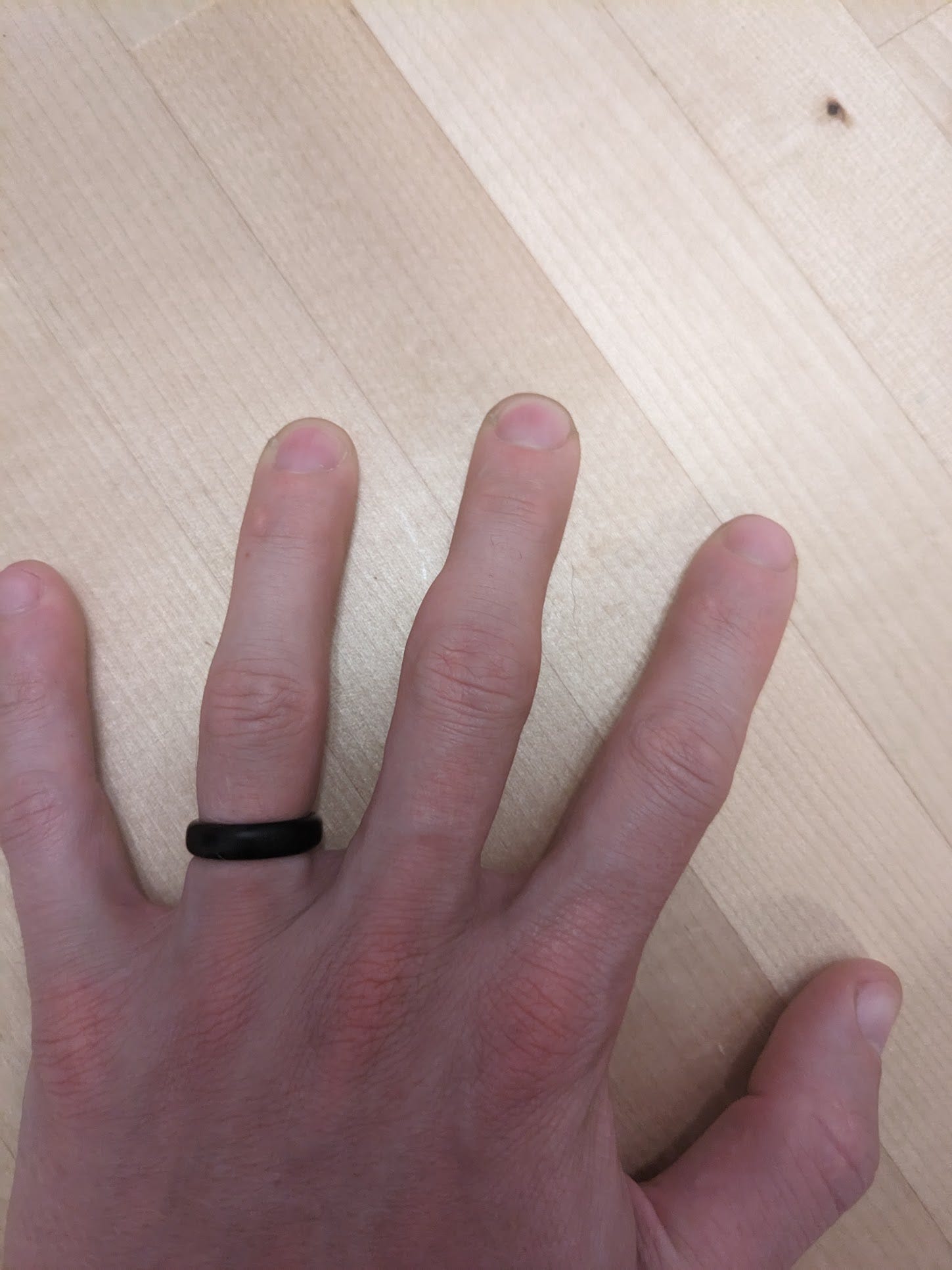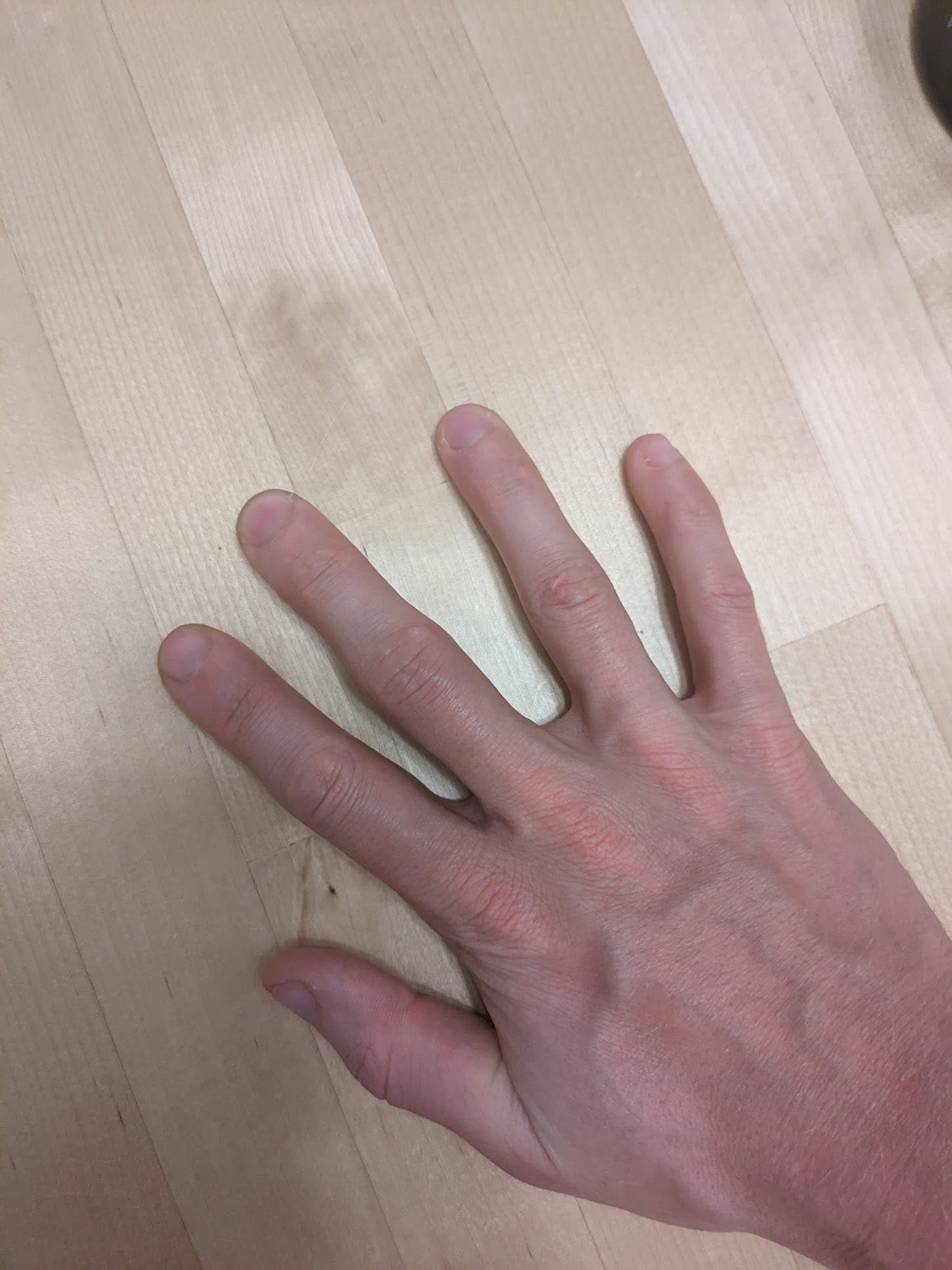Lattice Training Log Part 16: Burnout. Lessons learned. New beginnings.
January 18, 2023
Update on training, weeks 17-24
At the very beginning of this training journey, a week before doing the lattice assessment, I tweaked the middle finger of my left hand hangboarding. Looking back, this was probably pretty good foreshadowing for where this journey would end.
Around week 6 I catalogued all the various tweaks and pains that I was accumulating during training. I wrote
I feel like my fingers are always sore.
Around week 12 I injured my right index finger more seriously.
Around week 17 I tweaked my neck (again).
Week 18, the PIP joint on both of my middle fingers swelled up. Loading my middle fingers ended up being really painful and I lost a substantial amount of finger strength, which essentially prevented me from climbing on anything overhanging + crimpy.


My coach and I ended up dropping the tension board & finger strength part of my program, replacing it instead with some rehab protocols that I got from a PT. With a pretty low workload during the holidays, I soldiered on.
Then, on week 22, I tweaked my lower-back doing bent-over barbell rows. I wasn’t able to lean forward without considerable pain for about 3 days. Getting things out of the fridge proved to be a rather tricky squatting exercise.
At this point I was only a couple of weeks before the end of my 6 month training commitment with Lattice, so I decided to call it quits.
Reflection on training
This wasn’t really how I expected this journey to end, but looking at the timeline above, I probably could have anticipated where it was heading.
In this last post of the training log, I wanted to reflect on the entire experience.
Things that went well
Limiting max effort bouldering
I think I learned a lot about what structured training can look like, and probably my biggest takeaway was the amount of max-level bouldering that was programmed.
During my time with this training program, I was only doing max bouldering for about 40 minutes per week, every 2 out of 4 weeks. In my prior training, I would ratchet up the intensity of my climbing until I was projecting moves I couldn’t do. I probably spent 3+ hours every week in this zone.
I think being forced to limit my time on project-level moves, and putting a substantial amount of time into sub-maximal bouldering, really drove home for me how to do this properly.
Dedicated Tension Board time
I got a lot better at the Tension board. Before, I never dedicated consistent time to board climbing. Over these last (almost) 6 months, I have sent tension board V5s, V6s and even a V7. These felt impossible when I first started. Most recently, I finally sent And I’m dying V5.
Planning my training out ahead of time
Prior to working with Lattice, I would show up with a vague plan, but I would never time my climbing sessions or decide ahead of time what kind of warmup drill I would do that day. During the last 6 months, I really enjoyed showing up at the gym with a clear plan of what I was going to do that day, and it’s something that I will continue going forward.
Exposure to a variety of training methods
In my prior training, I focused almost exclusively on max strength. During the last 6 months, I worked on hypertrophy, energy systems (power-endurance, work capacity), core (floor + bar) and mobility/flexibility. I think I’ve gained a lot by experiencing how these various sessions feel, and what impact they have on my climbing. I now have a much bigger toolbox that I can apply to my future training.
Things that didn’t go so well
The pressure
Going to failure in my training so often was injury-prone and extremely tiring - both physically and mentally. Heading to the gym after a stressful work day often felt daunting. It was hard to summon the drive to try hard and on many days I dreaded training.
I found the weekly schedule to be quite rigid. If I had a very busy day, or if I slept poorly, I ended up stressing out a lot about taking an extra rest day. Missing a day meant I had to cram sessions into the rest of the week or completely skip them, which felt really high-stakes. I think this is a direct consequence of organizing training into weeks/blocks. When I program my own training, I can always just shift everything back a day since bleeding into the next week doesn’t matter.
Communicating via text
Talking over email/chat with my coach didn’t really work too well. I’m a perfectionist, and I really want to understand why I’m doing each thing and the nuance of how it should work. I think such things are difficult to communicate without being able to have a quick back-and-forth.
I think if I end up hiring a coach in the future, I’ll probably look for someone who I can meet with via video call regularly. I think even a 30 minute video call every other week would be really helpful in this respect.
Is coaching what I need?
I repeatedly find myself trying to train, but instead getting injured.
I think part of this is due to the fact that I am pretty impatient. I end up ratcheting up intensity too fast, and trying to do too much. I have the ability to persevere through a lot of pain and lack of motivation, which ends up only compounding the issue.
I also have some repetitive use injuries and poor movement patterns that I never addressed properly, which often come up when I try to push myself.
I think this experience showed me that I need to address both of these issues before I can focus on getting better. So I think what I need most right now is a Physical Therapist to help me heal and come up with a plan for my frequently recurring issues.
I also probably need to figure out how to be more patient, and stop pushing myself to the point of getting hurt. (perhaps a sports psychologist?).
What’s next?
I’ve been working with a PT. I’ll write more details on that later, once it is more clear what’s actually going on with me and what ends up working or not working.
My main priority right now is healing my fingers. I’m stepping away from the tension board for a few weeks, and spending time doing range of motion exercises, stretching, and carefully loading my the fingers to help recovery. My PT is also helping me figure out my shoulder, neck and lower back issues so I can avoid hurting myself in the future.
In the meanwhile, I am getting back into enjoying climbing. I really don’t want to feel like going to the climbing gym is a chore. I’m climbing during busier times so I can socialize, rather than training solo. Most of the time I’m just doing flash-level bouldering on friendly holds, with 1x-week harder days to maintain some snappiness / strength. I’m also doing a lot of reflecting on the role that I want climbing and training to play in my life, and I probably have a few future blog posts kicking around my head on that topic.
For training, I’m doing a pretty a simple routine:
- Strength A: 1h pushups, wide pullups, hollow holds
- Strength B: Overhead Press, offset pullups, hollow holds
I’m alternating A & B, not committing to a weekly schedule, so I can just take an extra rest day if I want to. I can super-set the exercises so I can do 3 sets in about 15 minutes. I’m also working in the 6-8 rep range, with 2 reps in reserve (so at 8-10 rep max). I’m hoping that by avoiding really high intensities (<3RM), and avoiding going to failure, I won’t risk re-injuring anything for the time being.
Thanks for reading!
Edit: I wrote a bit more about my thoughts on why I failed to avoid injury in this reddit comment.